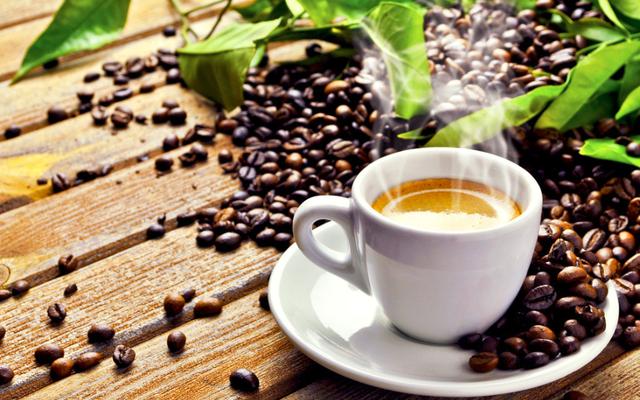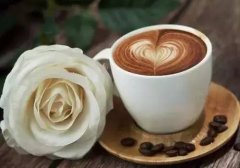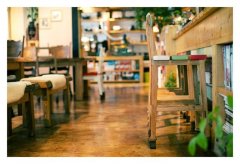The difference, distinction and award-winning situation of single bean at Edini Manor in West Java, Indonesia

For professional baristas, please follow the coffee workshop (Wechat official account cafe_style)
The difference, distinction and award-winning situation of single bean at Edini Manor in West Java, Indonesia
West Java Province is a first-tier administrative district of Indonesia. Located in the western part of Java, facing the Java Sea to the north and the Indian Ocean to the south, including offshore islands, covering an area of 46300 square kilometers, Java has a tropical rain forest climate, which is hot and humid all the year round. The plains along the northern coast have the highest temperatures, while the mountains are much cooler. High humidity often creates a debilitating climate.
From November to March of the following year is the northwest monsoon period, rainy and cloudy; from 4muri to October is the southeast monsoon period, with more sunny days and less rainfall. The average annual rainfall in Jakarta is about 1760 mm (69 inches). The average daily maximum temperature in Jakarta is 30 ℃ (86 ℉) and the lowest is 23 ℃ (74 ℉). In the inland highlands of Tosari (Tosari, 1735 meters (5692 feet) above sea level), the average temperature is 22 ℃ (72 Murray 47 ℉). Because volcanic ash periodically fertilizes the land, the soil in Java is very fertile.
Aromanis "Aiqini" is a traditional dessert unique to Indonesia. It is made from a snack made from the basic ingredients of flour and sugar. Here, the coffee is named after Aromanis, indicating that the coffee bean tastes like marshmallows. But coffee beans come from West Java and Ciwidey Garut. In fact, there are no special coffee seeds used, but tanned coffee can show such a chic flavor, which is, of course, not recognized in West Java, Indonesia.
Producing area: Tiegula Mountain, Indonesia
Altitude: 1400 Murray 1600m
Baking degree: shallowness
Treatment method: honey treatment
Taste description: strong fruity, with plum and jackfruit flavor, clean and sweet back to sweet.
Flavor: complex floral aromas, with tropical fruit flavors like mango and jackfruit on the palate. The palate is soft and sweet.
West Java honey treated West Java Honey Processing
The score of the cup test is as high as 92 points. The English name of the bean Aromanis is Indonesian, which means sweet mango.
At the manor, we tasted very different Indonesian coffee.
The farmers make us their coffee in the simplest way of soaking in hot water.
Careful planting and treatment
Let the flavor of coffee get rid of the established frame of Indonesian coffee.
Sweet fruit, lemon, even flowers
Are vigorously presented in different varieties one by one.
It really subverts what we think is sweet and bitter.
West Java by hand. 15g powder, medium grinding (small Fuji ghost tooth cutter 4 grinding), v60 filter cup, 88-89 degrees water temperature, 30g water injection for the first time, steaming for 27 seconds, water injection to 105g water cut off, wait for the amount of water in the powder bed to reach half and then water injection, slow water injection until 225g water, no water powder ratio at the end, 1:15, extraction time 2:00
West Java Honey Processing Aromanis
Country: Indonesia
Manor: Eleanor
Producing area: Tiegula Mountain
Baking degree: shallow baking
Treatment method: honey treatment
[honey treatment]
Honey treatment, called HoneyProcess or Miel Process, is used in coffee gardens in Costa Rica (Costa Rica), Panama (Panama) and Guatemala (Guatemala), which is called Honey Coffee. The so-called honey treatment refers to the process of making raw beans with mucous membrane for sun-drying. After the outer pulp of the coffee bean is removed, there will be a layer of sticky jelly. The traditional washing method washes it away with clean water, but this direct drying method has been born because of the limitations of water resources in some high-altitude areas.
Honey treatment is a complex, time-consuming and difficult processing method. The first step is to select high-quality fruit, and then peel off the pulp to leave the endocarp, where the endocarp is the core of honey treatment. The endocarp is rich in sugar and sour taste, which will slowly seep into the coffee beans during the drying process. The second step is drying, which is the most important condition for the production of high-quality coffee beans.
Honey treatment keeps the coffee clean after washing, and although the brightness of the coffee decreases, it increases the sweetness and caramel taste. According to the different degree of honey treatment, honey-treated coffee can be divided into yellow honey treatment, red honey treatment and black honey treatment. The advantage of honey treatment is that it can best preserve the original sweet flavor of ripe coffee, giving the coffee a light black sugar flavor and drupe flavor, while the berry flavor also supports the basic aroma of red wine, which is considered to be a very elegant product.
Variety: Jember, SMI 795
Altitude: 1400 Murray 1600m
Flavor: fruity, plum, jackfruit flavor, sweet and sweet
West Java, Indonesia
The coffee beans are picked from the branches and separated from the fruit, rinsed and then dried. Coffee beans diserok every hour to dry evenly, including midnight. "it's at night that it's very important because of the high humidity," says Arief, who turned coffee (Aug. 5, 2014)-Indonesian original machine translation.
The coffee was processed for 25-26 days! Not surprisingly, the price of coffee beans Aromanis is a little more expensive than regular coffee beans. Coffee farmers' professional cooperatives sell coffee bean raw materials Aromanis 130000-150000 rupees per kilogram, while mutated coffee is offered at a retail price of 80000 rupees, 200g per pack.
Factory name: coffee factory address: Guangzhou Yuexiu District Dongshankou Baoqian Street coffee manufacturers contact information: 38364473 shelf life: 90 net content: 227g packaging: bulk coffee beans ripe degree: whether coffee beans contain sugar: sugar-free origin: Indonesia roasting degree: light roasting
The island of Sulawesi, located between Borneo and New Guinea, is sometimes called Celebes. The coffee produced on the island is full of grains and rich in flavor. The best coffee beans come from Kalossi and Rantepao in the southern part of the island. Among the many tastes of spleen, try Celebes Kalosi coffee.
On the whole, Indonesian coffee has a strong flavor, mellow taste, slightly syrup flavor and excellent acidity, and its two main export markets are Germany and Japan, which reflects the excellent quality of the coffee. What attracts consumers is the unique quality of its Arabica coffee beans. You can add milk or cream to high-quality Indonesian coffee without worrying about affecting its taste. Indonesian coffee is divided into six grades, the best of which is AP. But no one knows exactly what these two capital letters stand for.
When ships replaced sailboats, coffee produced on these islands faced the same problem as Indian coffee from Mysore-that is, consumers were so used to coffee affected by long-distance travel that they were reluctant to accept the taste of this "fresh" coffee. To solve this problem, the Indonesian government has tried its best to copy coffee affected by long-distance travel, and they have "stored" coffee beans for up to a year. However, what is not satisfactory is that the taste of this wetted coffee is not so widely accepted that it affects the good reputation of its coffee.
However, Indonesia's "stored" coffee, or "journey" coffee, is still produced today. Its sales brands are generally "OldGovernment", "OldBrown" and "OolJava".
Although Indonesia produces so much admirable coffee, it is puzzling that local residents prefer Turkish-style coffee to its famous European-style coffee.
[Origin]: Mont Tikukur Tiegula Mountain, West Java?
[altitude]: 1400-1600m?
[variety]: Arabica species?
[producer]: Arinanis?
[flowering]: March-May, September-November?
[treatment]: Honey Precess sun honey treatment?
[cup test]: 92 points?
[flavor]: mango, red wine, peach juice, strong fruit aroma, with plum and jackfruit flavor, clean and sweet.?
The sun-dried beans of Edini Manor in Indonesia, its flavor is nothing like Indonesian beans, this bean has its own strong fruit aroma, mango, red wine, peach juice, as well as plum and jackfruit flavor, clean and sweet, cup test score as high as 92 points, so that you can not believe that this is a coffee bean from Indonesia. Huh? The English name of this bean is Aromanis, which means sweet mango in Indonesian.?
Indonecia Indonesia
Population: 237424000
In Indonesia, coffee beans slowly grew from Java to neighboring islands, first to Sulawesi in 1750, but not to northern Indonesia at that time. Until 1888, when planting began around Lake Lake Toba, it eventually spread to Lake Lake Tawar in the Gayo region in 1924.
SUMATRA
Sumatra has three main growing areas: the northern part of Aceh, the slightly southward area around Lake Lake Toba, and the recent rise of islands near Mangkuraja. It may also be traced back to smaller areas of Takengon, Bener Mariah, Lintong, Sidikalang, Dolok Sanggul, and Seribu Dolok, which surrounds Lake Doba in Aceh. In the past, the coffee beans sold in this area were called "Sumatra Mantenin", but in fact there was no place name called Mantenin, which came from the ethnic names of the local islanders. Manning is usually divided into grades, classified as Grade1 or Grade2. There is no doubt that the grading method is to use the cup to test the quality rather than the raw bean itself. But I still have doubts about recommending Grade1 because the rating seems to be overdone. It is strange to divide different varieties into different batches, so most Sumatran coffee beans are mixed with unknown varieties. Sumatran coffee beans are exported through the port of Medan, but stagnated in the port for too long before export, hot and humid climate factors will not be conducive to the quality of coffee beans.
Altitude: 1100-1300m in Aceh, 1100-1600m in Lake Doba, 1100-1300m in Mangkuraja
Harvest: September-December
Varieties: Typica (including Bergandal, Sidikalang, Djember), Timtim, Ateng, Onan Gajang
JAVA
In Indonesia, this area inherits Dutch colonization and habits, so there are more large coffee estates. The four main coffee fields, covering 4000 hectares, were formerly government estates. At that time, the coffee beans in this region enjoyed a first-class reputation, although I believe that not long ago, a large number of formula beans have been replaced by other coffee beans "Mocha-Java". Java coffee beans have been high for a long time, but there have been significant price reductions in the 20th century. The planting area covers the east side of Java around the Ijan volcano, as well as the west side.
Altitude: 900-1800m
Harvest: September-September
Variety: Typicas, Ateng, USDA
SULAWESI
Even though seven major estates supply about 5% of Sulawesi's production, local production is dominated by the supply of small farmers. Most Arabica beans are grown high around Tana Toraja, while Kalosi in the south becomes a brand, and there are two less well-known areas: Gowa, west of Mamasa and south of Kalosi. A small number of particularly interesting coffee beans are washed with water, which is worth thinking about, and it is highly recommended to try it when you have the opportunity. Semi-washing treatment is a common method in Sulawesi, and the local area also produces a lot of Rob beans.
Altitude: Tana Toraja 1100-1800m Mamasa 1300-1700m average 850m
Harvest: may-November
Variety: S795, Typicas, Ateng
FLORES
Flores is a small island about 320km (200miles) east of Bali and is located in one of the Indonesian archipelago. As a latecomer to the coffee industry, it has also developed a good reputation for growing coffee. In the past, it was common to see that a large part of Flores's coffee was sold domestically or mixed with other coffee exports, rarely sold directly in the name of "Flores Coffee". There are active and dormant volcanoes on the island, and the mixture of Bajawa volcanoes has a great positive impact on the main planting areas. In terms of coffee processing, the semi-washing process is the most common treatment in the region, and some coffee beans are still produced by full-water treatment.
Altitude: Tana Toraja 1200-1800m Mamasa 1300-1700m average 850m
Harvest: may-September
Variety: Typicas, Ateng, Robusta
BALI
Coffee arrived late in Bali and was originally grown on the Kintamani plateau. Coffee production was deeply affected by the eruption of Gunung Agung in 1963, killing more than 20, 000 people and extensively destroying the eastern part of Bali. In the late 1970s and early 1980s, the government distributed Arabica bean seedlings to boost coffee production, but some thought the effect was limited because about 80% of the island's production today is robusta beans. Although tourism provides the largest income, agriculture employs the most people on the island, while Japan used to be the biggest buyer.
Altitude: 1250-1700m
Harvest: may-October
Variety: Typicas, Typica derivatives, Robusta
Java produces exquisite aromatic coffee with relatively low acidity, delicate taste and good balance. Java coffee has a better aroma and acidity than coffee from Sumatra and Sulawesi. The best plantations in Java are Blawan, Jambit, Kayumas and Pankur. Java mocha is a mixture of Java coffee and Yemeni mocha coffee.
Sumatra, the second largest island in the Indonesian archipelago, is the center of Indonesia's oil industry, and its rubber and timber are also famous exports. However, the coffee in Sumatra is more eye-catching, which is similar to Java coffee, but with slightly heavier grains. Coffee beans from Mandheling and Ankola have also received a lot of attention, and the former is even known as the world's fullest coffee beans.
Important Notice :
前街咖啡 FrontStreet Coffee has moved to new addredd:
FrontStreet Coffee Address: 315,Donghua East Road,GuangZhou
Tel:020 38364473
- Prev

The history, culture and story allusions of the sacred boutique beans of the dome manor in Guatemala
Professional barista exchanges please follow the coffee workshop (Wechat official account cafe_style) Guatemala dome manor holy boutique beans history and culture, stories and allusions Finca Filadelfia also known as La Cupula manor, La Cupula in Spanish refers to the highest dome-like part of traditional Spanish architecture (so we try to translate it as dome
- Next

Indonesia West Java Aimani Estate Single Bean Flavor Characteristics, Producing Area and Brewing Parameters
Professional barista exchanges, please pay attention to coffee workshop (Weixin Official Accounts cafe_style) Indonesian West Java Emani Manor single bean flavor characteristics, production area and brewing parameters BALI coffee came to Bali late, it was originally grown in Kintamani plateau (Kintamani). Coffee production was affected by the Gunung Agung eruption in 1963, which killed 20,000 people.
Related
- Does Rose Summer choose Blue, Green or Red? Detailed explanation of Rose Summer Coffee plots and Classification in Panamanian Jade Manor
- What is the difference between the origin, producing area, processing plant, cooperative and manor of coffee beans?
- How fine does the espresso powder fit? how to grind the espresso?
- Sca coffee roasting degree color card coffee roasting degree 8 roasting color values what do you mean?
- The practice of lattes: how to make lattes at home
- Introduction to Indonesian Fine Coffee beans-- Java Coffee producing area of Indonesian Arabica Coffee
- How much will the flavor of light and medium roasted rose summer be expressed? What baking level is rose summer suitable for?
- Introduction to the characteristics of washing, sun-drying or wet-planing coffee commonly used in Mantenin, Indonesia
- Price characteristics of Arabica Coffee Bean Starbucks introduction to Manning Coffee Bean Taste producing area Variety Manor
- What is the authentic Yega flavor? What are the flavor characteristics of the really excellent Yejasuffi coffee beans?

